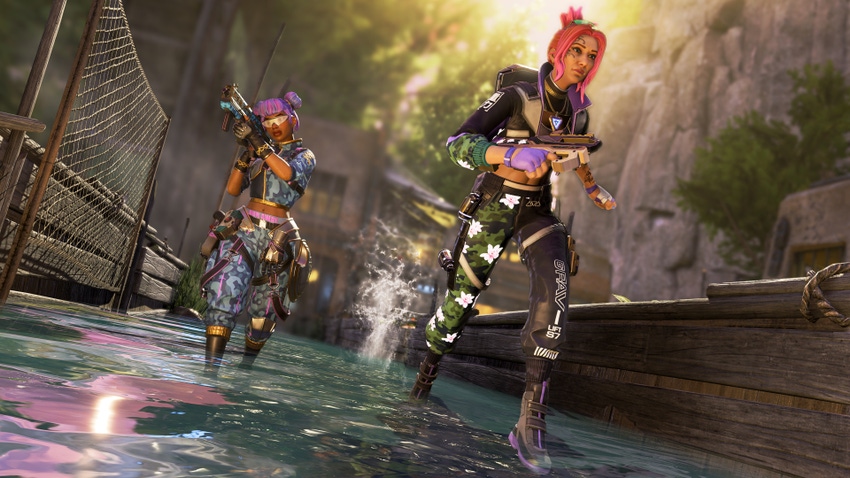
Read More from GDC 2024 | Keep up with the latest game industry event coverage from GDC 2024, including news, talks, interviews, and more from the Game Developer team.
The secret to Apex Legends' gorgeous first-person animation? Mouth cameras
Game development can be very, very silly sometimes.

At a Glance
- Respawn Entertainment's battle royale game Apex Legends is known for beautiful first-person animation.
- Its animators offered a slew of insights into their process at GDC 2024.
- One of the most surprising techniques on display: mouth-mounted cameras to capture reference footage.
Reference photos and video are key tools in the world of 3D animation. In third-person games or cinematics, they're a powerful tool to observe the motion of real-world objects, and can inform an animator in creating stylish visuals that still have a touch of realism.
First-person games like Respawn Entertainment's Apex Legends face a unique challenge with animation references. Objects look differently when viewed in a first-person perspective than when viewed from a distance. How close or far a character's hands or objects are from their body can be crucial to selling something like say, the fancy animations that accompany Apex Legends' high-priced Heirlooms.
At the 2024 Game Developers Conference, animator Haydn Cooper revealed their surprising technique for capturing incredible high-quality, second-to-none first-person reference footage: sticking a pop socket on a phone camera and holding it with their mouth.
Why should a game animator hold a camera with their mouth?
Cooper's setup is brain-thuddingly simple. You need three pieces of equipment: 1. A modestly powerful smartphone camera. 2. A cheap phone case. 3. A Popsocket or similar circular phone grip.
That's it. That's all you need.

A powerful image.
The reasoning behind Cooper's (slightly unsanitary) method is twofold. She conceded that most animators get on fine with head-mounted Gopro cameras—but Gopros require setup, and it's not a quick process to review the footage and what you need to change. Scrolling through your phone's photo gallery and looking at the footage is a much faster process.
Second, placing a camera at mouth level is a slightly better angle for recreating how first-person cameras look in games. Placing the camera in the middle of the face, and capturing a 16:9 image of what's being seen, helps establish proper eye level for the player. A head-mounted Gopro might be off by a few degrees and give a different feel to the reference video.
The results speak for themselves. Cooper showed off their reference capture footage for two Apex Legends animations tied to heirlooms for characters Wraith and Fuse. With Fuse's footage, she practiced flipping a coin over and over to mimic Fuse catching a guitar pick flicked from his grenade launcher.

For Wraith, Cooper captured high-quality footage of themselves flipping a Kunai around. Observing each video, she was able to pick out the nuances of the movements and enhance them through animation to give each character a bit more "oomph" that fits the over-the-top style of the game.
It's an incredible technique for first-person animation—just as long as you wipe down that phone grip when you're done shooting.
This story has been updated to correctly reflect the speaker's pronouns.
Game Developer and Game Developers Conference are sibling organizations under Informa Tech.
About the Author(s)
You May Also Like









